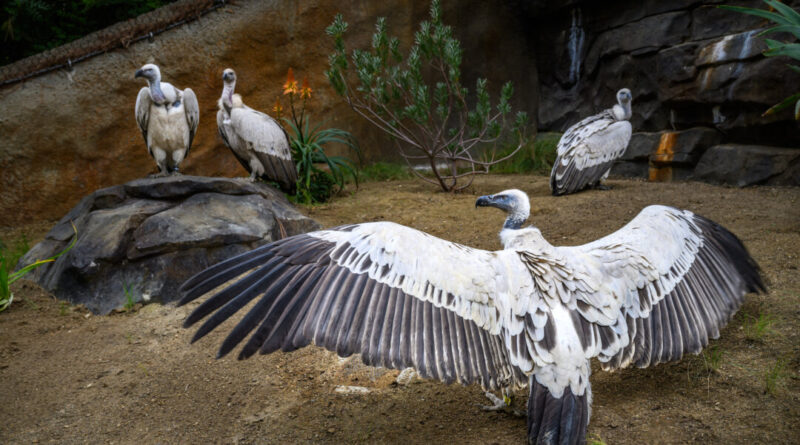Los Angeles Zoo Set to Reveal New Habitat for Cape Vultures
LOS ANGELES—The L.A. Zoo is set to unveil a Cape vulture exhibit this Friday, providing both locals and tourists with an opportunity to observe these magnificent birds indigenous to Africa, as announced by officials on Tuesday.
Named for their habitat in South Africa’s Cape region, Cape vultures are scavengers, similar to other vulture species. They serve as nature’s “clean-up crew,” eliminating large carcasses that could potentially transmit diseases.
The L.A. Zoo has been nurturing Cape vultures since 1985, and visitors have enjoyed watching these birds glide overhead during the Angela Collier World of Birds Show. The newly created exhibit will enable a more intimate look at the vultures’ nesting and roosting behaviors.
“This previously unused exhibit has been thoroughly renovated to cater to the needs of this species, allowing visitors to gain a closer perspective on the lifestyle and actions of this African vulture,” stated Denise Verret, CEO and director of the L.A. Zoo.
“This new habitat will undoubtedly help Angelenos develop a deeper connection with wildlife and a greater appreciation for a species that plays an essential role in the ecosystem,” she continued.
According to zoo officials, the upgrade was made feasible through a $3 million donation from the Fritz B. Burns Foundation, supplemented by support from the California Department of Fish and Wildlife. Recognition plaques will be displayed in the viewing pavilion to honor the foundation’s contribution.
Rose Legato, the zoo’s bird curator, shared her enthusiasm for the new exhibit.
“This habitat features specialized elements tailored to the species, including colony nesting spots in the rock wall and plenty of room for sunbathing,” Legato remarked in a statement. “It not only showcases the birds’ natural behaviors but also highlights the zoo’s commitment to animal care and welfare.”
The Cape vulture, a large bird, can have a wingspan of up to eight and a half feet, stands around three feet tall, and weighs between 15 and 24 pounds. It possesses large feet and a sharp, hooked beak, which aid in tearing flesh.

A vulture inside a new exhibit at the Los Angeles zoo. Courtesy of Los Angeles Zoo

A new cape vulture exhibit at the Los Angeles zoo. Courtesy of Los Angeles Zoo
As noted by the zoo, the Cape vulture is classified as an “Old World” vulture, making it more closely related to eagles and hawks than to “New World” vultures like turkey vultures and California condors.
The Cape vulture is currently listed as “vulnerable” by the International Union for Conservation of Nature due to threats posed by human activities. The zoo has a rich history of collaboration with this species as part of the Association of Zoos & Aquariums’ Saving Animals from Extinction initiative focused on African vultures.



